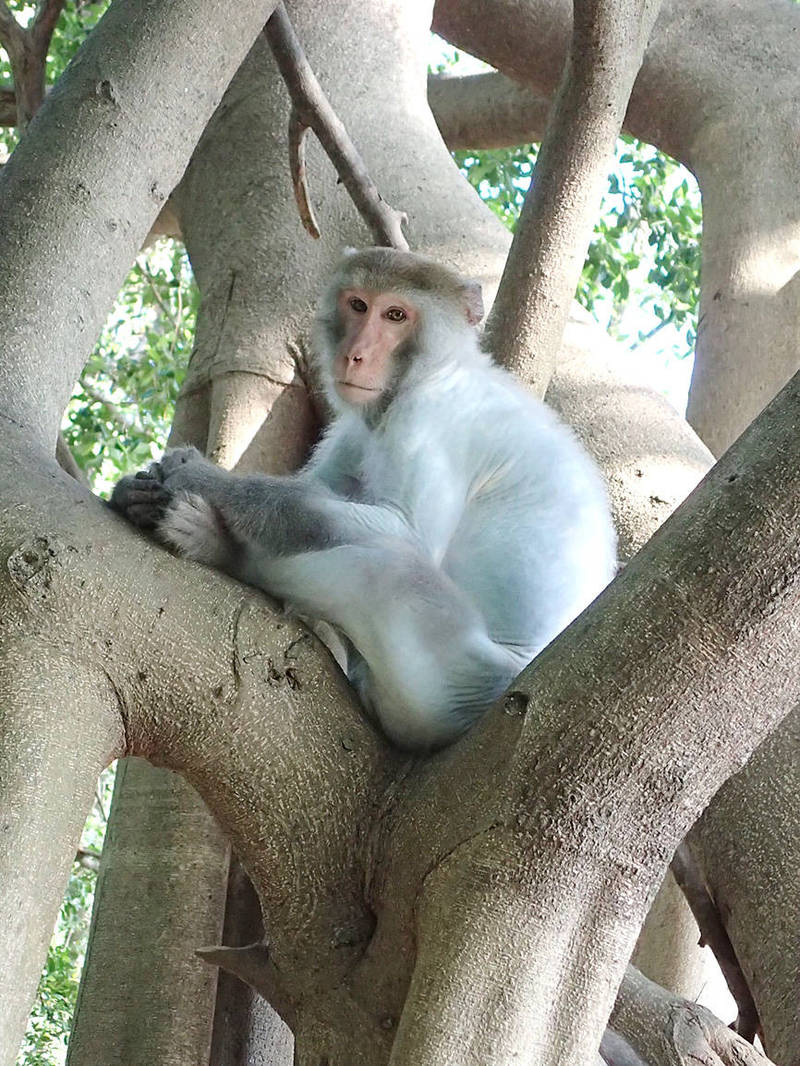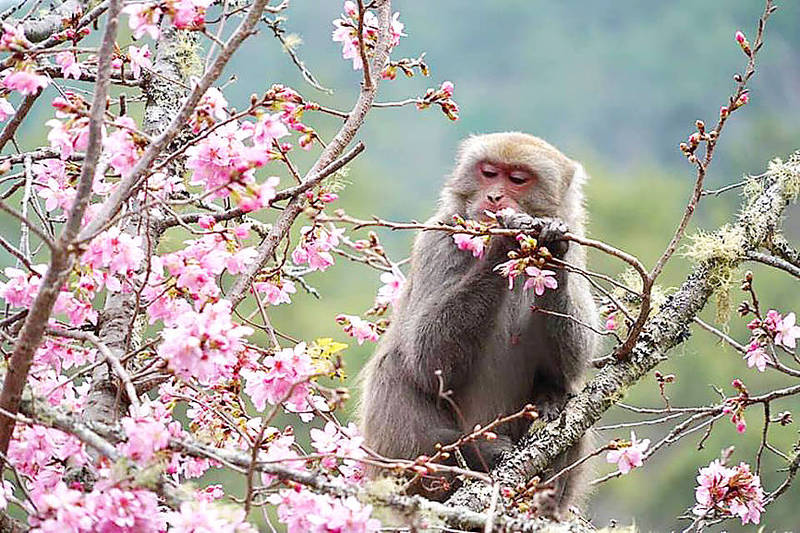《TAIPEI TIMES》 Shoushan monkeys losing hair due to stress: study

A Formosan macaque suffering from hair loss is pictured in Kaohsiung’s Shoushan National Nature Park in an undated photograph. Photo courtesy of Chen Chen-chih via CNA
THE BALD TRUTH: A campaign to stop people from feeding Formosan macaques in the mountains has left the monkeys hungry and stressed out, an expert said
/ Staff writer, with CNA
Researchers have attributed an outbreak of baldness among Formosan macaques in Kaohsiung’s Shoushan National Nature Park on the twin stresses of a high population density and less generous tourists.
Park authorities in 2015 enlisted the aid of National Pingtung University of Science and Technology amid concern that the monkeys were experiencing hair loss — which first appeared in 2013 — because of an unknown infectious disease, the park administration office said on Sunday.
However, a study released by the university last year blamed high levels of stress for the appearance of alopecia among the park’s primate population.
Chen Chen-chih (陳貞志), an associate professor at the university’s Institute of Wildlife Conservation who headed the study, said that his team had taken skin samples from randomly selected monkeys at Shoushan (壽山) for fecal glucocorticoid metabolite analysis, which is used to detect stress levels.
The results showed that monkeys that had hair loss had higher levels of glucocorticoid hormones, indicating that they were more stressed out than their more hirsute counterparts.
Chen’s team attributed this to the high density of Formosan macaques living in the Kaohsiung mountain, because people have been feeding the monkeys there for decades.
The average population density of Formosan macaques in Taiwan is about 10 to 20 monkeys per square kilometer, while at Shoushan, it is 200 monkeys per square kilometer, the study said.
However, with the success that Kaohsiung and park authorities have had in encouraging people to stop feeding the animals, monkeys originally drawn to the area for its abundance of food are now going hungry.
This has led to more stress and less hair for some of the park’s inhabitants, Chen said.
The hair-loss problem among monkeys could only be resolved if their population continues to decrease, he said.
However, it is debatable whether humans should play an active role in artificially decreasing the number of monkeys in Kaohsiung, or if nature should be left to run its course — a process that could take decades, he said.
The university’s study was published in Scientific Reports, an online peer-reviewed journal, in May last year.
新聞來源:TAIPEI TIMES

A Formosan macaque eats flower petals while sitting on a sakura tree at Wuling Farm in Taichung yesterday. Photo courtesy of Wuling Farm














